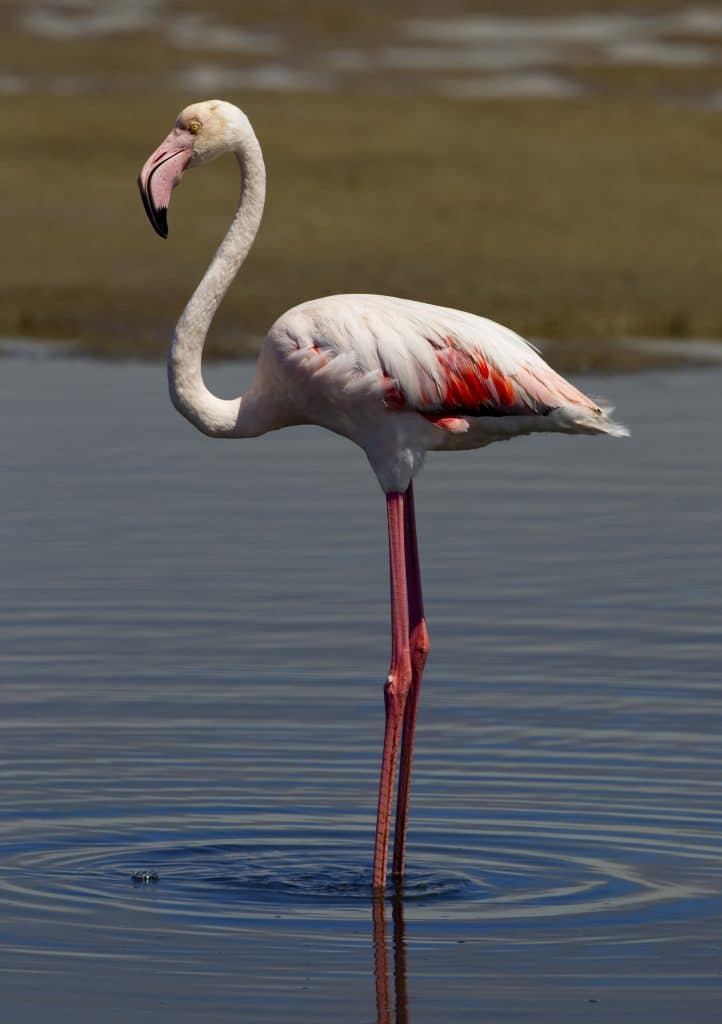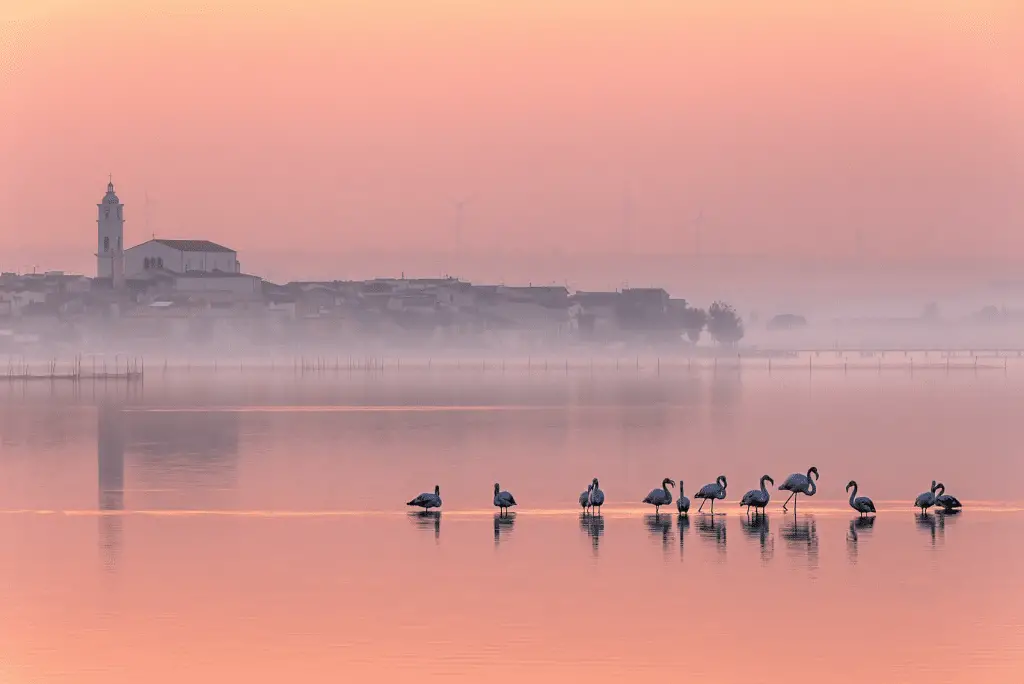Have you ever looked at a pink flamingo and wondered how such an incredibly charming bird could exist? These creatures, with their long necks and thin legs, look like they came straight out of a fairy tale. But beyond their undeniable beauty, flamingos hide secrets and curiosities that are just waiting to be discovered.
The pink flamingoknown scientifically as Phoenicopterus roseusstands out not only for its color distinctive but also for its considerable size. Imagine a bird as tall as an adult, with a wingspan that can reach 240cm! This size makes it the largest of the flamingos, with i males which in some cases can go as far as 187cm tall. Yet, despite their size, pink flamingos manage to maintain an enviable grace, especially during flight, where their long red wings unfold in all their magnificence.
But what gives the pink flamingo such a lively and characteristic colour? The answer lies in their diet. These birds feed mainly on salted shrimp and blue-green algae, rich in carotenoids. These pigments, once assimilated, are deposited in the feathers, giving life to that intensely fascinating pink that distinguishes them. Interesting, right? The pink flamingo is a true master in the art of “dressing up” in the colors of nature, a talent that intensifies during the breeding season when the coloration becomes even more vibrant.
And what about their iconic one-legged position? This behavior, which has always fascinated observers, may have an explanation thermoregulatory: Standing on one leg could help conserve body heat, especially in cold waters where these birds spend a lot of time. However, this theory does not completely explain the phenomenon, given that flamingos adopt the same posture even in warm waters or on land. Maybe it's simply a way to rest, or is there something more that we don't yet understand?
Despite their apparent tranquility, pink flamingos are extremely social and thrive in large colonies. These groups can number thousands of individuals and serve several vital purposes: offering protection from predators, optimizing foraging, and improving the efficiency of nest site use. During the mating seasonthe colonies are divided into smaller breeding groups, where males and females participate in complex synchronized ritual dances, a true spectacle of nature.
The language of flamingos rose
There communication among the flamingos rose it's the same fascinating. They are noisy birds, whose calls vary from grunts to higher-pitched sounds, similar to those of geese. These vocalizations they are crucial for recognition between parents and chicks, but also for keeping the colony together and during courtship rituals. The repertoire The sound of pink flamingos is an essential component of their social life and contributes to group cohesion.
The pink flamingo's diet is as unique as their appearance. They feed by filtering small organisms such as algae, shrimp and various forms of plankton from muddy waters. Their curved, specialized beak allows them to separate mud and silt from the water, catching food with the help of lamellae, hairy structures inside the jaw. This feeding method, along with their carotenoid-rich diet, contributes to their characteristic Pink color.

The mating ritual of the pink flamingo is a real ballet. Within breeding groups, both males and females participate in elaborate synchronized displays, extending their necks, bobbing their heads, and flapping their wings. These rituals not only strengthen bonds within the colony, but also help individuals find a partner. Pink flamingos are monogamous for the breeding season, and choosing a mate and nest site is a complex and collaborative process.
Wetland Ambassadors
Pink flamingos are true globetrotters and can be found in different parts of the world, from the African coasts to European and Asian wetlands. They prefer environments such as salt lakes, lagoons and coastal wetlands, where the shallow, nutrient-rich waters provide plenty of food. The presence of pink flamingos in a habitat is often indicative of ecosystem health, making them important environmental indicators.
Despite currently being classified as Least Concern by the IUCN, pink flamingos are not free from threats. Habitat destructionwater pollution and anthropogenic disturbance are among the main dangers facing these birds they have to face. The conservation of wetlands and the protection of flamingo habitats are crucial not only for their survival, but also for the biodiversity of these vital areas.
In addition to theirs ecological importance, pink flamingos have a special place in culture and in the collective imagination. Symbols of beauty, balance and color, appear frequently in art, literature and even fashion. The fascination they exert on people of all age makes them ambassadors ideal for environmental awareness and the storage from the nature.

Curiosities about the pink flamingo
To conclude our triphere are some curiosities: did you know that flamingos can drink salt water thanks to special glands that eliminate the excess Of salt? Or that the oldest recorded flamingo lived to be over 80 years old in captivity? These and other fascinating details make pink flamingos even more extraordinary.
The pink flamingo embodies wonder and the complexity of the natural world. Through their existence, they teach us the importance of biodiversity, the conservation of wetlands and the delicate balance of ecosystems. We hope that their story inspires concrete actions to protect the environment and preserve species.
And now, a question for you: after discovering so much about pink flamingos, How do you think we can contribute to their conservation?
#Discovering #pink #flamingo #guide #curiosities